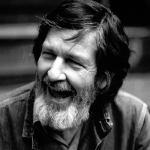By: Frank Cadenhead
Here is the story: a young black conductor from Charleston, South Carolina just triumphed over 237 other candidates to win victory in one of the top conducting competitions in the world. This was on Sunday, September 20 at the competition in Besançon, France. He was just 23, seven to ten years younger than almost all the other candidates. This competition win usually leads to an important career and very few American conductors get to the final round. When you add race into the mix, we are talking about what would seem a major story with wide interest.
The biennual International Competition for Young Conductors at Besançon is well known. Alexander Gibson, Sergiu Comissiona, Gerd Albrecht, Seiji Ozawa, Michel Plasson, Jesus Lopez-Cobos, Jiri Kout and Yutaka Sado are some laureates. The winner in 2005, Lionel Bringuier, went on to assist both Esa-Pekka Salonen and Gustavo Dudamel at the Los Angeles Philharmonic and has since been named music director of the Tonhalle Orchestra in Zurich. George Pehlivaia, who won in 1991 and had a major career, was the first North American to win and the only one before Heyward. Lu Shao-Chia (1988) is now the music director of the National Symphony Orchestra of Taiwan. Marco Parisotto (1997) has been music director of the Ontario Philharmonic since 1996. Kazuki Yamada (2009) will, next year, take the helm at the Monte-Carlo Philharmonic. One of the issues this year was the withdrawal of Erina Yashima, already in the top 20, who accepted Ricardo Muti’s invitation to work with the Chicago Symphony. A substitute was found. While the list of winners has names who have not pursued a major conducting career, winning the competition is obviously a vital step toward a career.
In Europe it was a major story. “L’Américain Jonathon Heyward remporte le 54ème concours international de jeunes chefs d’orchestre” (France TV) “Concours des jeunes chefs d’orchestre de Besançon: un Américain rafle le premier prix” (France Musique Radio), “Un Américain de 23 ans remporte le prestigieux concours de chefs d’orchestre de Besançon” (Le Parisien) “Un Américain champion des chefs d’orchestre” (Le Figaro), The internet was also there: “Jonathon Heyward lauréat du Concours international de Besançon” (www.resmusica.com). “54ème Concours de jeunes chefs d’orchestre de Besançon …” www.concertclassic.com. Agence France Presse took up the story and you can find it in every newspaper in France including the one on the island of Reunion. You can see the story in Caracas “Joven de 23 años gana premio a directores de orquesta en Francia,” Germany “Jonathon Heyward gewinnt Dirigierwettbewerb in Besançon” (klassik.com). “Jonge Amerikaanse dirigent Jonathon Heyward …” (Holland – Radio 4), “Jonathon Heyward, Grand Prix de direction d’orchestre à Besançon” Crescendo Magazine, Belgium) and “American Jonathon Heyward Wins Grand Prix In Besançon” (Pizzicato Magazine, Luxembourg).
In English, the only important notice was on MusicalAmerica.com. It did publish the story but the photo accompanying the article was of conductor Dennis Russell Davies, head of the jury. Thus a key element, the young conductor’s ethnicity, was not noted. There was a notice on the Hampstead Garden Opera website in the UK where he has conducted performances. Otherwise, in English, nothing. He has been active in conducting below-the-radar ensembles in New York and Boston but even this moved no American journalist to pick up the story.
It speaks to how remarkable decimated and pathetic classical music journalism is in the United States. I write for MusicalAmerica.com (but not this story) and I continue to do so because so often I note that major news in Europe does not cross the Atlantic. But Musical America is a subscription site and articles are not available to the general public. It does have wide distribution within the musical community and is certainly seen by the major press.
This failure to report on the success of Mr. Heyward not only exposes problems with American classical music journalism, it points to a much larger issue: America’s declining interest in classical music. If the press does not report, the public is not aware. If even a clearly celebratory event such as this one does not appear in print, we are failing a dwindling public. It is also some indication of how slim the press structure is in America. Where are the effective online sites? Is there anyone looking at classical music news in our leading publications? If Heyward cannot get noticed in his own country, the next aspiring conductor will take his father’s advice and get a degree in pharmacy. Another conductor’s father, criticized for this kind of advice, wailed “How was I supposed to know he would grow up to be Leonard Bernstein.”
This must change. Classical music, with a large and devoted following all over America, is losing any sense of community and the press is tossing the fans into a dark, empty void.
